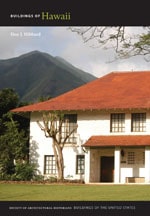You are here
Lihue Theater Senior Apartments (Lihue Theater)

An ingenious, if not radical, adaptive reuse, the former Spanish Colonial–style theater with its hints of Art Deco ornament was converted into housing for the elderly in 1999 by architect Gary Canner. The facade and foyer of the former theater were retained, but the auditorium was replaced by a pair of three-story apartment wings with a courtyard in the middle. The modest Spanish-influenced facade focuses on the terra-cotta-embellished gable ornament, a potpourri of swags, garlands, Ionic capitals, atlantes, and grotesques. Original scallop shell light standards and urn fountains spouting sea creatures remain to preside over the lawns on either side of the entrance. The simple, mid-1930s marquee is now dormant, but the exterior, framed coming-attraction posters still suggest the allure of Hollywood. The tropical-flavored foyer remains intact with its painted ceiling and plaster frieze featuring banana leaves, ferns, gingers, and Kauai pheasants. This revitalized entrance, with a concrete floor scored to emulate slate, provides the apartments with an imposing lobby while celebrating the building's former use through reminders of the theater years mounted on the walls.
Writing Credits
If SAH Archipedia has been useful to you, please consider supporting it.
SAH Archipedia tells the story of the United States through its buildings, landscapes, and cities. This freely available resource empowers the public with authoritative knowledge that deepens their understanding and appreciation of the built environment. But the Society of Architectural Historians, which created SAH Archipedia with University of Virginia Press, needs your support to maintain the high-caliber research, writing, photography, cartography, editing, design, and programming that make SAH Archipedia a trusted online resource available to all who value the history of place, heritage tourism, and learning.

